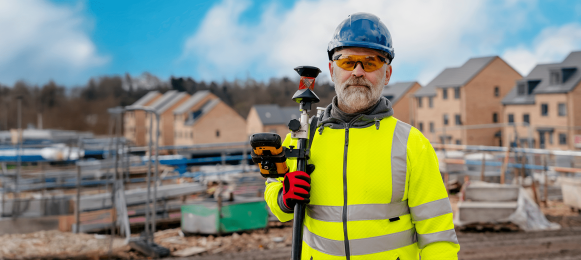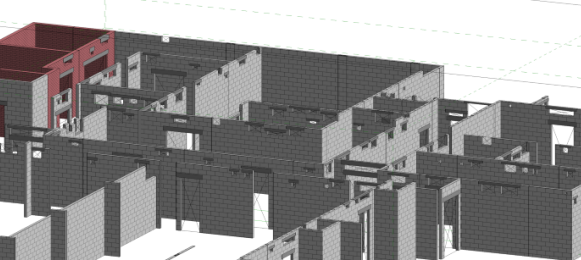The construction industry is undergoing a major change as it gradually moves towards a more dynamic future fuelled by data and the latest technology. At the heart of this transformation is a revolutionary concept - digital twins - virtual replicas of physical buildings. They are in effect, living simulations, constantly evolving alongside their real-world counterparts, but how did we get here?
The exact origin of the term "digital twin" is not totally clear, but the concept itself can be traced back to the early days of computer-aided design (CAD) in the 1960s. Back then, engineers began creating virtual representations of physical systems to simulate their behaviour and performance. However, the computational power and software limitations of the time prevented widespread adoption.
Fast forward to the 21st century, with the explosion of data and the rise of powerful computing resources and technologies such as 3D modelling, sensor integration and the Internet of Things (IoT) - we can see that they have all converged to create a perfect storm for the digital twin revolution. The term itself has been around since 2010 and it soon became a major buzzword across various industries, including construction.
But what exactly is a digital twin? In simple terms it is a virtual replica of a building, infrastructure project, or even an entire city, existing alongside its physical counterpart. This virtual model, constantly updated with real-time data and sensor information, is the essence of a digital twin. It's a dynamic representation that evolves alongside the physical asset it mirrors.
Think of it like a highly detailed video game where the player character is the building itself. Every brick, pipe and wire has a digital counterpart that can be monitored, analysed and even manipulated virtually before any physical changes occur on the construction site.
Step into the future of construction. Explore our 3D Modelling service to power your projects with smart, digital accuracy.
How Digital Twins are Changing Construction
Digital twins are transforming construction in several key ways, particularly in how they enable improved design and planning. 3D models within a digital twin allow for accurate visualisation and clash detection. This means potential conflicts between building elements can be identified and resolved before construction begins, saving both time and money during the build.
They also act as a central hub for project information, accessible to architects, engineers, contractors, and facility managers. This improves communication and collaboration, helping to streamline the construction process.
Through virtual simulations, digital twins can optimise workflows, detect bottlenecks, and allocate resources more efficiently. The result is shorter project timelines and reduced costs.
Real-Time Monitoring and Predictive Maintenance
Sensors embedded in physical structures can feed data back to the digital twin, allowing real-time monitoring of a building's performance. This predictive maintenance capability helps identify potential issues before they escalate into major problems, reducing downtime and costly repairs.
The data captured can also support better decision-making. From energy optimisation to planning future upgrades, digital twins enable data-driven strategies throughout a building’s lifecycle.
Supporting Sustainability and Waste Reduction
Beyond efficiency and cost savings, digital twins have a meaningful role in addressing construction’s environmental impact. By simulating the environmental effects of different materials and design choices, teams can optimise for sustainability. This includes reducing energy usage with passive design strategies and selecting eco-friendly materials.
Real-time energy performance monitoring allows facility managers to identify opportunities for further improvements, lowering the building’s carbon footprint. Digital twins can also support smarter waste management by enabling accurate material take-offs and optimised sequencing, reducing on-site waste.
Improving Construction Site Safety
Construction sites are inherently risky environments. Digital twins allow safety consultants to virtually simulate construction activities and identify potential hazards before workers set foot on site. This includes simulating equipment use, fall risks, and access routes.
Teams can also use the model to develop site-specific safety protocols and provide virtual training to workers. Combined with real-time monitoring, digital twins help reduce risks and enable proactive safety interventions during construction.
Enabling Continuous Improvement
Digital twins support long-term learning and evolution in construction. By capturing and analysing data from design through to operation and maintenance, they reveal insights that can inform future projects.
They’re also useful tools for managing renovations and expansions. As the needs of a building change, the digital twin can be updated to reflect modifications, ensuring seamless integration with existing infrastructure.
Enhancing Transparency and Communication
Most importantly, digital twins help foster transparency and trust. Acting as a single source of truth, they provide all stakeholders with access to up-to-date project information, from design intent to as-built conditions.
They also improve communication with clients and stakeholders through virtual walkthroughs and real-time visualisations. This transparency keeps everyone engaged and aligned throughout the project, creating a more collaborative and positive construction experience.
The Future of Construction: Powered by Digital Twins
The potential of digital twins in construction is vast and continues to evolve. As technology advances and data collection becomes even more sophisticated, we can expect to see even more innovative applications emerge. From integrating with artificial intelligence for predictive maintenance to facilitating the adoption of modular construction methods, digital twins are poised to reshape the future of construction.
At AJ Digital, we are committed to staying at the forefront of these advancements. By offering a range of bespoke 3D modelling solutions, we empower our clients to harness the power of digital twins and navigate this exciting new era in construction.
It is why we offer a range of bespoke 3D modelling solutions specifically tailored to the construction industry such as scan to BIM Revit Modelling. This is a service which transforms laser-scanned data from existing buildings into a Building Information Model (BIM) using Revit software. This digital twin acts as an invaluable asset for renovation projects, facilitating clash detection, improving design coordination and enabling a more informed approach to construction planning.
Another service, Scope Gap Revit Modelling, helps where project information may be incomplete or missing specific elements. AJ Digital can bridge this gap by creating detailed Revit models for those elements, ensuring complete and coordinated project data. This eliminates communication gaps, reduces errors and streamlines the overall workflow.
A 3D model is not just about geometry. We enrich our models with real-world data such as installation dates, equipment specifications and even warranty information. Our team can collect this data directly on-site, integrating it seamlessly into the model. This enriched data transforms into a powerful facility management tool for efficient maintenance scheduling, asset tracking and better decision-making throughout the building's lifecycle.
We believe that by embracing digital technologies, we can build a future where construction is not just efficient and cost-effective, but also sustainable, safe and future-proofed. By embracing digital twins and bespoke 3D modelling solutions, the construction industry can move towards a future of greater efficiency, collaboration and sustainability. At AJ Digital, we are committed to being at the forefront of this exciting revolution, to help our clients build smarter and better.
Design with tomorrow in mind. Discover our 3D Modelling services and see how digital accuracy drives smarter outcomes.



